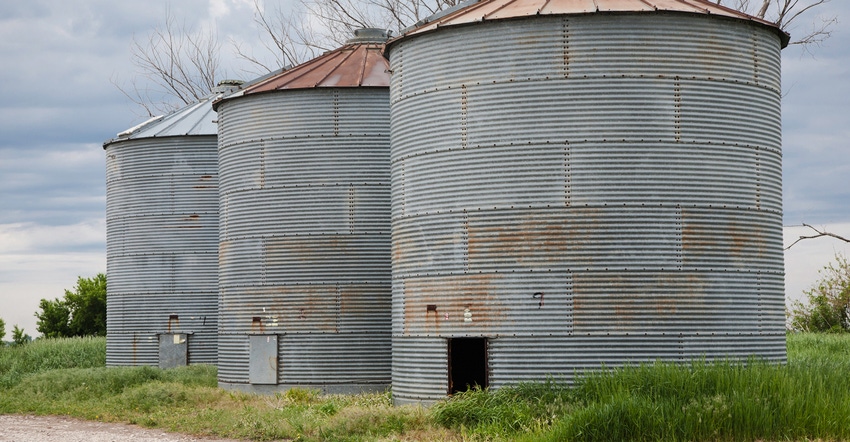March 9, 2018

With a tight grain storage situation predicted for 1958, Kansas farmers were exploring their options for adding on-farm storage 60 years ago. For farmers who wanted to add bins, the Department of Agriculture offered loans for up to 80% of the cost at a 4% interest rate. The government also offered a special re-seal program, under which farmers could hold “loan” stocks of corn, wheat, barley and oats for an additional year, keeping the grain in storage on the farm and earning payments to store it.
100 years ago
There was a shortage of draft horses around the world in April of 1918 as World War I raged and the Allied Forces needed both horses and mules. Kansas farmers struggled to find enough draft horse teams to get their spring work done.
The cover story of April 6, 1918 in Kansas Farmer encouraged farmers to cull small horses and concentrate on breeding animals that would top 1,200 pounds. The article also predicted that “the tractor will not pay generally until the farmer can raise his own repairs, gas and oil” and pointed out that bankers “are unanimously of the opinion that the man who farms with big draft horses, especially mares, is a good risk while the tractor farmer is not.”
70 years ago
Researchers at the Garden City Branch Experiment Station were experimenting with using sodium bicarbonate in the diet of lambs. Professor Rufus Cox said the use of sodium bicarbonate resulted in the elimination of death losses in the lamb crop. He said the experiment was in its first year and on a small scale and noted that he planned more experiments to determine the best way to feed sodium bicarbonate as well as in which roughages provided the bet results.
50 years ago
Corn rootworms were a major problem for Kansas farmers in 1968 as they prepared for planting following severe rootworm infestation from the year before. The recommendation for control was application of a soil insecticide either at planting or as an over-the-top treatment in June. In some areas the rootworms were beginning to have resistance to insecticides.
20 years ago
Aerial photos of fields using infrared imagery was the newest thing in crop scouting in the spring of 1998. Kansas State University Extension agronomist Scott Staggenborg was a leader in teaching farmers about the new technology.
K-State teamed up with an agricultural services company and farmers in fourth northeast and north central Kansas counties to study three non-irrigated and three irrigated fields in the first year.
Goerzen is Executive Director of Old Cowtown Museum in Wichita.
About the Author(s)
You May Also Like




